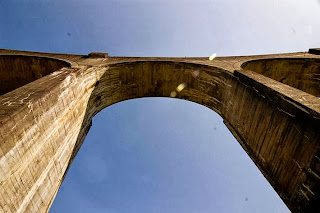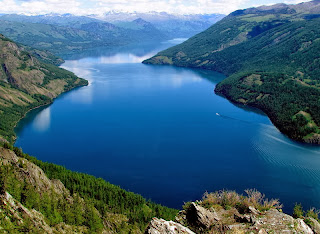The beautiful Glenfinnan Viaduct is a
railway viaduct built between July 1897 and Oct 1898 on the West
Highland Line in Glenfinnan, Lochaber, Highland, Scotland. The project
cost was around £18,904. It is situated at the top of Loch Shiel in the
West Highlands of Scotland, and has been used as location in several
films and television series. This project is considered great
engineering work of largest concrete without reinforcing built by Sir
Robert McAlpine. Sir Robert McAlpine took on a massive civil engineering
task with the building of the Mallaig Extension of the West Highland
Line from Fort William west to Mallaig, though that was not the
originally intended destination. The 21-Arch single track viaduct forms
part of the Mallaig extension of the West Highland Railway which was
constructed in between 1897 till 1901, which is also built entirely of
concrete.
It is a popular tourist event in the
area, and the viaduct is one of the major attractions of the line, the
lovely viaduct contains of 21 arches, each spanning 15m and has a
maximum height of 30m proffering remarkable views down Lochaber’s Loch
Shiel. These kinds of projects always offers great scarifications of
labour work, and during construction a cart-horse and driver were killed
when they fell into one of the piers while dumping their load, and were
buried in the concrete. In the latest research has shown that the sad
incident happened at Loch Nan Uamh Viaduct, further down the line, near
Arisaig, and the driver survived. Memorial plaques are at the latter
viaduct and at Glenfinnan Station Museum.
The West Highland railway line connects
Fort William and Mallaig, and was a vital vein for the local fishing
industry and the highlands economy in general, which suffered extremely
after the Highland Clearances of the 1800s. The line is used by
passenger trains operated by ScotRail between Glasgow Queen Street and
Mallaig, usually diesel multiple units. The viaduct project was not
often appreciated, and several authorities criticized when this viaduct
was first proposed. According to them; it would be prove a monstrosity,
enough in ugliness to take away all the charm and beauty of natural
scenes. Some would endorse this opinion now and wholeheartedly agreed.






























































